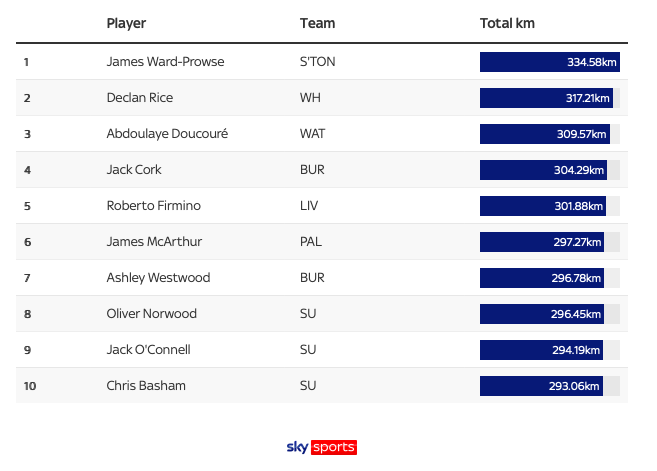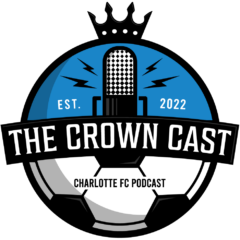Editor’s note: this post was written, and set to be published, right before the tragic death of Anton Walkes. It was held back out of respect for him, his family, his friends, his teammates, and all those, including us at The Crown Cast, who mourn his passing. Rest in peace, Anton.
As Charlotte continue their recruitment for the 2023 MLS Season, they announced their biggest signing in name since the transfer of now coach Christian Fuchs by signing Premier League veteran Ashley Westwood from Burnley.
Unlike most of Charlotte’s big moves in their short history, this move was met with more skepticism than many within the club were probably anticipating. Fans raised concerns about the profile of the player. The combination of his age (Westwood will turn 33 early in April) and the fact that he is coming off a major injury (suffered towards the end of the 2021/22 Premier League season) have left people wondering how immediate of a contribution he can make under these circumstances.
Though these concerns are legitimate–and I’m sure will have been well-considered by the recruitment-team–there can be no doubt about the quality of player they are signing and what he could bring to Charlotte’s midfield.
Should he make a full recovery from what was a very serious injury, there are plenty of traits Charlotte fans can look forward to.
The Charlotte Setup
It is unclear what system Head Coach Christian Lattanzio will implement for this season, and his changing of formation throughout last season provides no clear answer.
It seems most likely (based on the systems most commonly used and the squad profile) that Charlotte will play some form of a 4-1-4-1, 4-3-3, or a 4-2-3-1, with the latter being Lattanzio’s ideal set up, at least in my mind. In that system, a likely midfield for that system would be:

Swiderski in the 10 role is likely to continue given his form their last season, paired with the acquisition of Enzo Copetti as a 9. The main question is likely to be who Westwood’s midfield partner will be between Bronico or Jones. I have given Bronico the nod here, but either player would be a good fit next to Westwood, who has played in a midfield 2 beside a variety of players in his career.
Westwood’s Midfield Role
This is a tough one to answer. Because of Westwood’s aforementioned experience of performing different roles in a midfield pair, combined with the fact both Bronico and Jones themselves have played as a 6 and an 8, respectively, we may only get real clarity on how the team will look to allocate those roles once pre-season begins.
Having said that, Westwood himself sees the qualities he should be bringing to the side very clearly, as he described during his media availability on Tuesday.
Whether this was based on conversations between himself and Lattanzio, or just a candid answer of how he ideally sees his game is unclear, but this “playmaking box-to-box midfield” role could certainly be facilitated by either Bronico or Jones playing with him in a deeper ‘6’ role.
Let’s break down this role further, in his own words:
Playmaking
For regular watchers of the Premier League, they will know “playmaking” and “Burnley” aren’t exactly words that go hand in hand. Under Sean Dyche, they implemented an old-school 4-4-2 “playing the percentages” style based on being incredibly direct with long-distance passing and very aggressive physically throughout the centre of the pitch.
This obviously doesn’t lend itself to much creativity from the midfield pair, however, in Westwood’s case he was still able to find moments where he could show his talent by providing goal-scoring opportunities in a way that didn’t compromise Dyche’s style.
For those familiar with Westwood’s game, him possessing this quality from open play will come as no surprise. He is also a highly productive corner-taker.
In an area of the game that is becoming less and less directly effective, Westwood was able to still bring value to it, pairing a great ball-striking ability with the size advantage Burnley was able to boast over most sides.
Westwood has an incredible ability to be precise with delivering the ball into an area 3-6 yards from goal, as well as beyond the middle of the box. He does so with a high-arcing strike that ensures the ball cannot be defended by any of the players before that area of the box.
Whilst these may not be the conventional areas of “playmaking” that we would associate with say, a Karol Swiderski, this consistency of production still cannot be discounted – especially for a team that was 24th in xAG (expected assisted goals) in MLS last season.
Box-to-Box
When analyzing Westwood as a box-to-box player, you almost have to separate it into two categories.
He has impressive ball carrying in transition to, quite literally, take a team from a defensive situation to a good goalscoring opportunity
He is also able to win the ball in the middle portion of the field, followed by a driving run into the opposition third to create space for others and ultimately create opportunities for himself.
Whichever side of the description you wish to choose, it is clear that Westwood backs up the notion that he is a highly active midfield player who is not only able to be productive defensively through his work rate but also use it to contribute in attack.
Statistically, Westwood stacks up as one of the highest-ranking players in terms of distance covered, finishing as high as 7th in the entire Premier League in distance covered over the full 2019/2020 season.

Though we likely won’t see Westwood amongst the top 10 in distance covered in MLS due to Lattanzio’s much more possession-based style, it will still be just as vital that he’s able to deal comfortably with covering large areas of the field.
As well as being more possession-based, Lattanzio’s style has put an emphasis on width when playing in 4-2-3-1. With the wingers staying wide, naturally, this will create more space for the central midfielders to have to account for, a task I believe Westwood should be firmly up for.
Experience
This is one last area is important to touch on with regard to the Ashley Westwood acquisition.
With Christian Fuchs’ retirement and Harrison Afful re-signing on terms that should see his playing time take a dip, Charlotte was at risk of losing a lot of experience on the field. Lack of experience is hard to quantify but is generally accepted to be very important.
Not only does Westwood serve as a direct replacement to Fuchs as a veteran with a decade’s experience in top-flight European football, but by signing him at age 32 (compared to Fuchs playing the majority of last season at age 36), the club will hope that Westwood will have plenty of good years left to contribute. He should be able to set the tone and the culture as a leader of the players.
All things being considered, this is a really smart signing for both on and off-the-field contributions. I myself am excited to watch him in this constantly improving squad.

